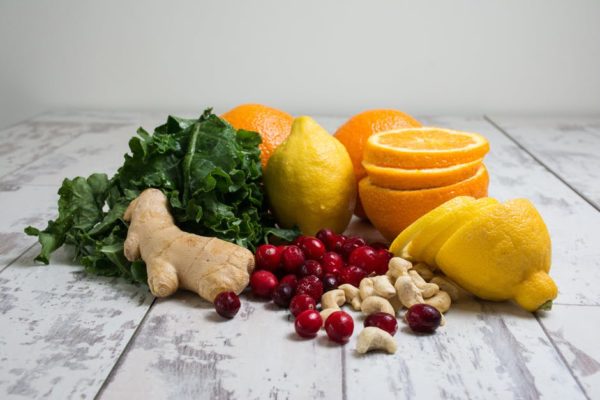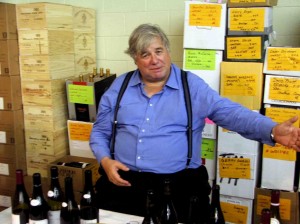 Years ago I interviewed the doyenne of Americans involved in the Burgundy wine trade, the knowledgeable and colorful Becky Wasserman, for a story in the Boston Globe. We rendezvoused at the Parker House (now the Omni Parker House) at the foot of Beacon Hill in its famous bar. Becky isn’t one to put herself forward in any way and has a quiet, modest, retiring air. She wasn’t exactly difficult to interview, but I found myself having to gently prod and probe to get much out of her.
Years ago I interviewed the doyenne of Americans involved in the Burgundy wine trade, the knowledgeable and colorful Becky Wasserman, for a story in the Boston Globe. We rendezvoused at the Parker House (now the Omni Parker House) at the foot of Beacon Hill in its famous bar. Becky isn’t one to put herself forward in any way and has a quiet, modest, retiring air. She wasn’t exactly difficult to interview, but I found myself having to gently prod and probe to get much out of her.
Mid-way through our chat her husband, the Brit Russell Hone, blew in like a gust of wind, heaved his massive bulk into a chair next to his wife and proceeded to highjack the interview. He seemed to be everything she wasn’t: voluble, opinionated, and more than a bit of a know-it-all.
But he was interesting. At some point he went off on the stupidity of American wine writing and in particular on what he called “the fruits and vegetables school” of criticism, wherein the expertise of the taster hinges not on his judgment about the overall quality of the wine so much as in an enumeration of every smell and taste that could be teased out of it.
That was around 2003 and I haven’t stopped thinking about the conversation. It still comes to mind whenever I read tasting notes that take this approach. The kind of wine writing the English have historically practiced isn’t characterized by this dogged pursuit of every nuance of scent and flavor; it rises – or aspires to rise – above individual sensations to give something more like an overall view of how the wine presents.
You can see this in a representative Jancis Robinson tasting note, this one of a 2006 Alessandria Gramolere Barolo: Blackish with vague hint of rust at the rim. Very heady and opulent on the nose. Some freshness counterbalances the richness. Dry finish. At the moment embryonic. But it should get there. Relatively modernistic.
Compare this with a tasting note by David Schildknecht (of the Robert M. Parker team) on the Soter 2011 North Valley Oregon pinot noir: sweetly ripe though tart-edged and piquantly pit-inflected fresh red berry fruit is garlanded with freesia and wisteria, but also tinged with smoky black tea and pungent green herbs. Somehow, the overall effect is not at all bifurcated or awkwardly edgy but instead reflects productive tension, culminating in a long, buoyant finish at once soothing and stimulating in its burst of berry seed-crunching.” Points if you were able to stifle a laugh reading that last bit.

Why the difference in these two approaches? I have at two ideas to float. The first is that British wine writing emerged in the early 19th century out of the tradition of note-taking by broker-shippers in Bordeaux and elsewhere. These were the days before estate-bottling was common and most wine was bought in barrel by brokers who then blended various lots to make up a fairly consistent house style and sold these wine under their own label. Berry Bros & Rudd still operate in this old-fashioned way.
When you are buying to blend and private label the most important aspects of what you buy will be those that will make a meaningful contribution to the final shape and temperament of the wine. In the end, it’s the overall impression that’s important, and this impression is made up of not of individuated scents and flavors so much as what I would call values.
In making such a wine your main concern will be whether the final product is indicative of a wine from, say, the Medoc. Is it well-structured and shapely? Does it have steady fruit and adequate acidity. Is there enough body to satisfy? (You can imagine a broker buying a barrel of wine that might be stridently acidic just to have on hand in the event he needed to add some zip to an otherwise flaccid cuvée. It makes sense that your note-taking technique would reflect the need to note this). I consider these characteristics values rather than discrete flavor impressions and they are the aspects British and continental wine writing has tended to focus on to this day.
The second idea concerns what I have long felt is a fundamental insecurity about wine that dogs Americans and influences the way we experience and talk about wine. When you don’t understand something you scan the data for something you can recognize and connect with. Americans, I think, take comfort in giving names to the smells and tastes they encounter in wine because they find in them something familiar, something we all have a vocabulary to express, and the result is a comfortable illusion of comprehension.
Recognizing a scent and connecting it with something you already know gives you something to say about the wine when you might otherwise not know how to respond to it. Sometimes one does sense horse stable or peach pit or wisteria in wine, but these individuated elements aren’t what I would call values.
When I was new to wine I discovered that I was rather good at the fruits and vegetables part of it and was pleased as punch when I could preempt a group of tasters by identifying a few discrete tastes and smells – with the result that others immediately experienced them, too. As I got better at this it seemed to me that I was making splendid progress; that I had broken the code. Over time, tasting with more experienced people made me realize how foolish this was. Being able to connect a flavor in wine with the flavor of some other thing in the world didn’t help me make judgments about the quality or character of wine because these elements weren’t values, the things that matter.
Here’s the discouraging part: Since coming to this conclusion wine has become MORE not LESS difficult to evaluate for me. It’s harder, much harder, to asses values than to accurately name individual flavors and scents, and what’s more, values require context — something that a taster develops only with a lot of wine experiences and time to mull them over.
I don’t consider myself to have arrived as a wine taster, but I think I’m finally paying attention to the right things.
Stephen Meuse can be reached at stephenmeuse@icloud.com